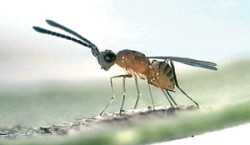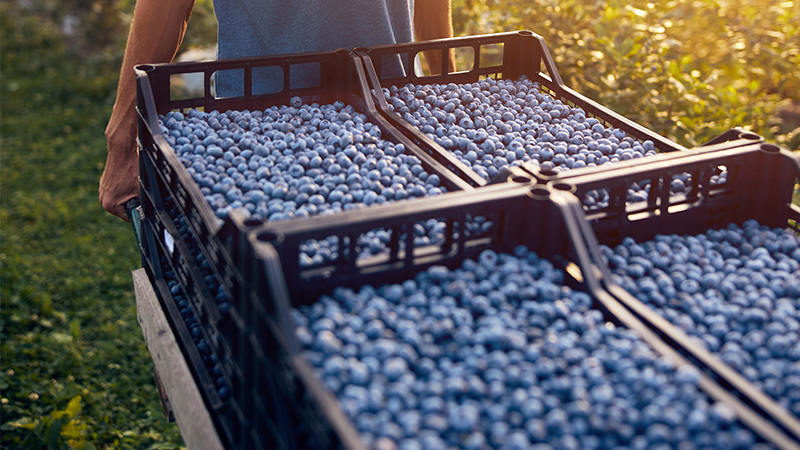Beneficial Of The Month: Parasitic Wasps

Identification
Common species include the Ichneumon wasps, Braconid wasps, and Chalcid wasps. They vary greatly in size. Growers are more likely to see the work of these parasitoids than the insects themselves: a tomato hornworm covered with white rice-like cocoons, or an aphid mummy with a tiny hole in it.
There are several species of Ichneumon wasps that parasitize pests such as cutworms, corn earworm, white grubs, and various types of caterpillars.
Braconid wasps are tiny, ranging from 1/16- to 5/16-inch long, with stout bodies. Hosts include various species of aphids, tomato hornworm, armyworms, and strawberry leafroller.
Chalcid wasps range from 1/64-to 5/16-inch in length. This group includes the well-known Trichogramma wasp, commonly available commercially for pest control purposes because it is an effective parasite of most moth and butterfly larvae — including cabbage worm, tomato hornworm, corn earworm, codling moth, cutworm, armyworm, webworm, cabbage looper, and corn borer.
Parasitic wasps attacking moth larvae are usually larger in size (1/4 to 1 inch). Most are slender with long antennae and legs. Many are brightly colored and may have wings colored with blues or browns. Adults can often be seen during the day feeding on flowers of trees and shrubs. Females possess a long, thin ovipositor.
Survival And Spread
After eggs are deposited on or in a host insect, larvae hatch and feed upon the host. The host will usually survive until the developing larvae are fully-grown, at which time the larvae exit out of their host. Recall the motion picture “Aliens” to envision insects being eaten from the inside out. Generation time is variable depending on host, ranging from 21/2 to 31/2 weeks.
Beneficial Activity
Wasps are critically important in natural biocontrol. Almost every pest insect species has at least one wasp species that is a predator or parasite upon it. Parasitic wasps are also increasingly used in agricultural pest control as they have little impact on crops.
Many species of parasitic wasps can be purchased from insectaries. In addition to augmentative releases, providing refugia and planting certain flowers like sunflowers and herbs such as fennel, dill, and cilantro can provide nectar/pollen sources that attract adult parasitic wasps.
Careful use of selective insecticides that do not impact parasitoids is important in conserving beneficial wasps.










